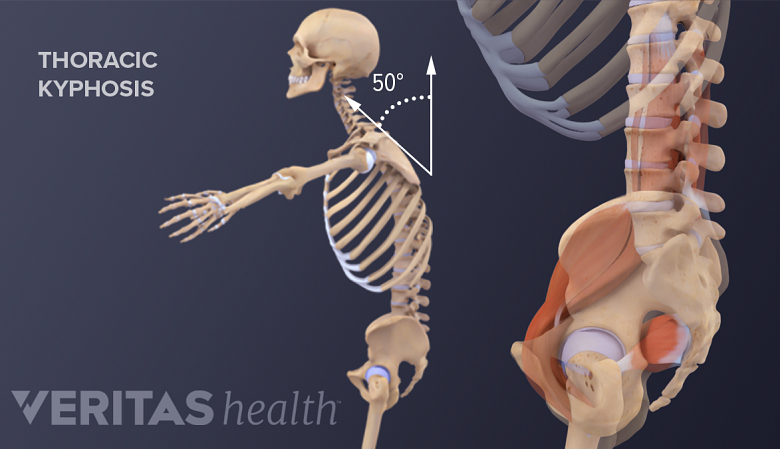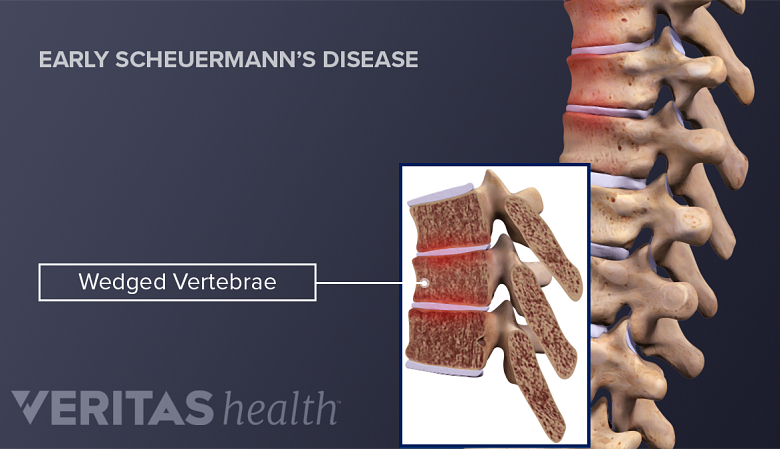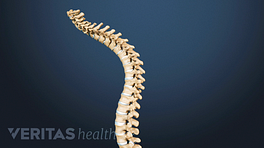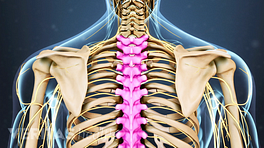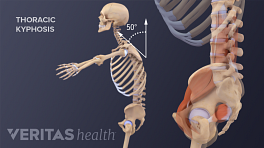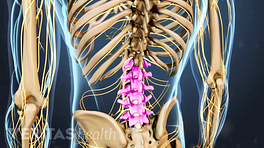The gradual curves of the human spine allow the body to absorb many shocks and stresses in daily life. It’s a delicate balance, though, and if part of the spine curves too much, pain and limited mobility may result.
Learn more: Thoracic Spine Anatomy and Upper Back Pain
The term "kyphosis" describes excessive outward curvature of the upper back.
Such problems occur at a young age with Scheuermann's disease, also called Scheuermann's kyphosis. It can lead to a rounded upper back, sometimes called a hump back, in otherwise healthy adolescents. Scheuermann's disease is among the most frequent sources of back pain in young people, with pain more likely to follow either exertion or long periods of inactivity.
See Back Pain in Kids and Teens
The number of terms used for the condition, named after the doctor who first described it, can be confusing. Patients and their parents may hear the name Scheuermann used for other conditions, such as changes in the disc spaces of the lumbar spine, usually called juvenile disc disorder (or juvenile discogenic disorder). Other terms sometimes used are Calvé disease and juvenile osteochondrosis.
Learn more: Juvenile Disc Disorder
Surgery is usually not needed except in the most advanced cases. Effective treatments often include braces and a supervised program of exercises to increase flexibility and ease pain.
In This Article:
- Scheuermann's Disease of the Thoracic and Lumbar Spine
- Symptoms and Diagnosis of Scheuermann's Disease
- Nonsurgical Treatments for Scheuermann's Disease
- Surgery for Scheuermann's Disease
Abnormal Bone Growth
In Scheuermann's disease, the vertebrae are wedge-shaped instead of cylindrical.
To understand how Scheuermann's disease develops, it’s helpful to understand the structure of the upper spine. The vertebrae are more or less cylindrical in shape, and stacked to keep the spine in an upright position.
See Thoracic Vertebrae and the Rib Cage
With Scheuermann's disease, an abnormality causes parts of the vertebrae to grow at different rates during a child’s growth spurt. This variance causes some of the vertebrae to become wedge-shaped, and the stack to look more like a tower that is leaning forward. These changes result in the exaggerated forward curvature of the upper back.
Scheuermann's disease occurs most often in the upper back, also called the thoracic spine, but occasionally develops in the lower back, or lumbar spine. When the disease is in the lumbar spine, the deformity is usually not as obvious, but the lumbar deformity usually causes greater pain, more limitation on movement, and an increased likelihood of the condition continuing into adulthood.
See Lumbar Spine Anatomy and Pain
Scheuermann's disease begins before puberty. It is not known what triggers the abnormal growth, but there are theories that the bone may have been injured at some point, or that the area was weak before puberty. Heredity is thought to play a role, but the connection is not straightforward.
The condition is connected to skeletal growth, and the curvature does not usually increase after growth is completed. It is estimated that 1 to 8 percent of people develop the condition.
Concerns About Appearance
If a young person shows symptoms of Scheuermann’s disease, medical help should be sought as soon as possible. In addition to the physical health challenges, the psychological impact can be significant, since the condition strikes at an especially self-conscious stage of life. Delaying medical care can have long-term cost; those who do not receive treatment as adolescents may encounter significant pain as adults.
Sometimes delays in diagnosis and treatment are caused by the mistaken belief that the deformity is due to poor posture. Such cases are known as postural kyphosis, a condition that involves weak muscles. People with Scheuermann’s disease have a skeletal deformity, however, and simply cannot straighten their spine.
